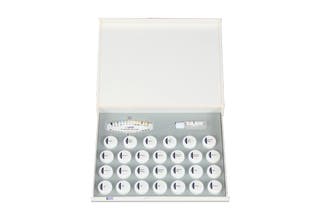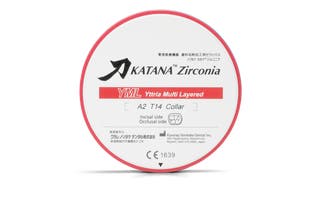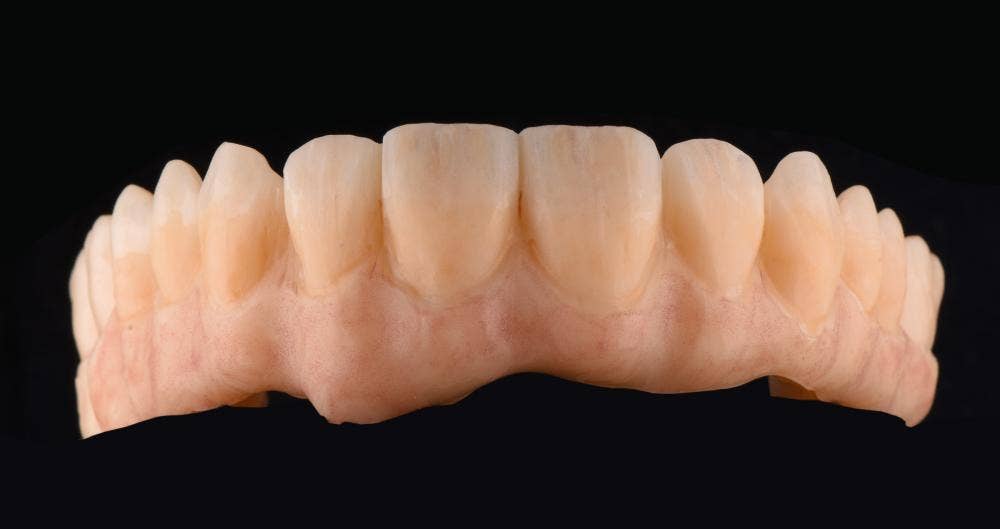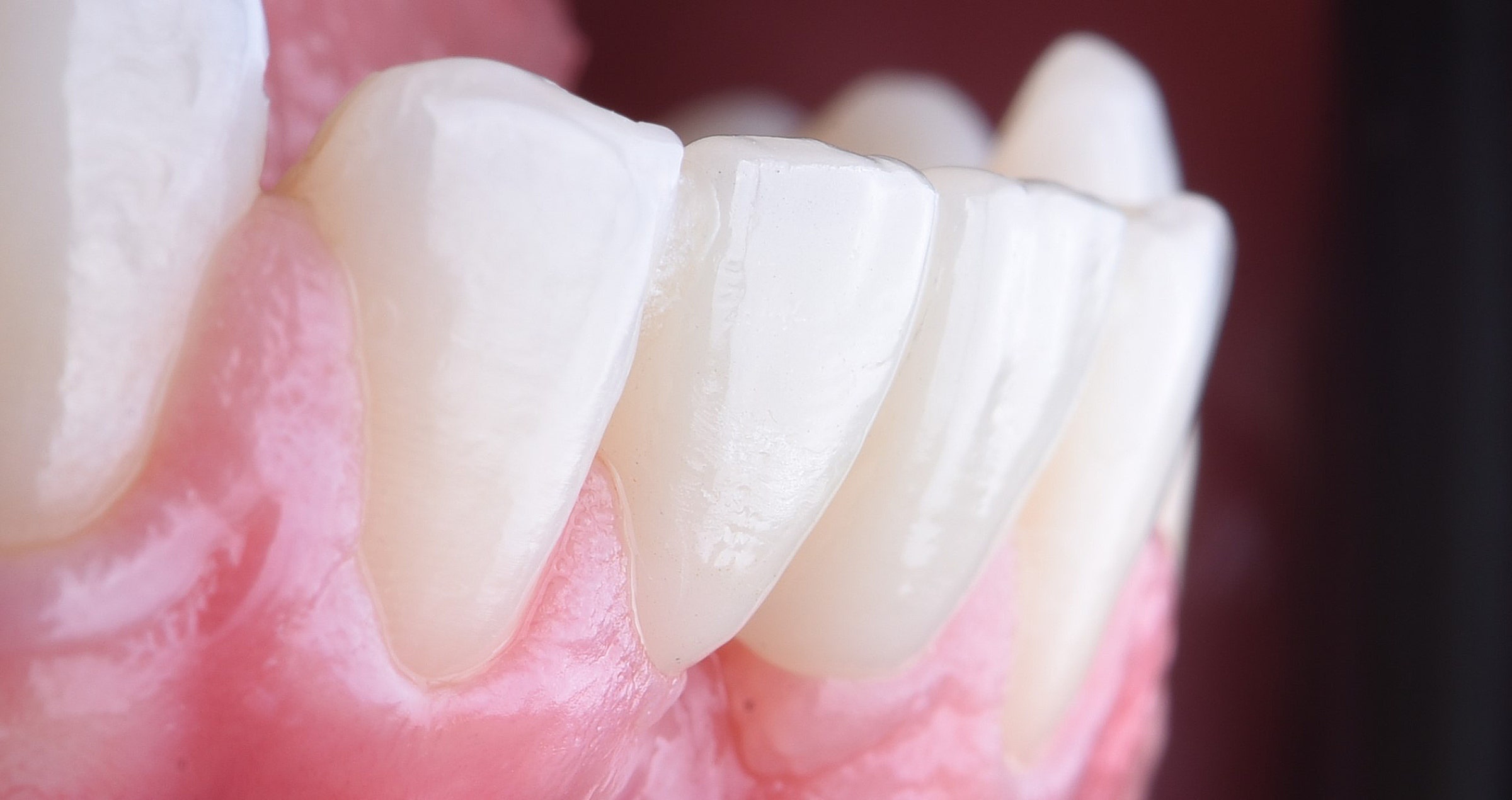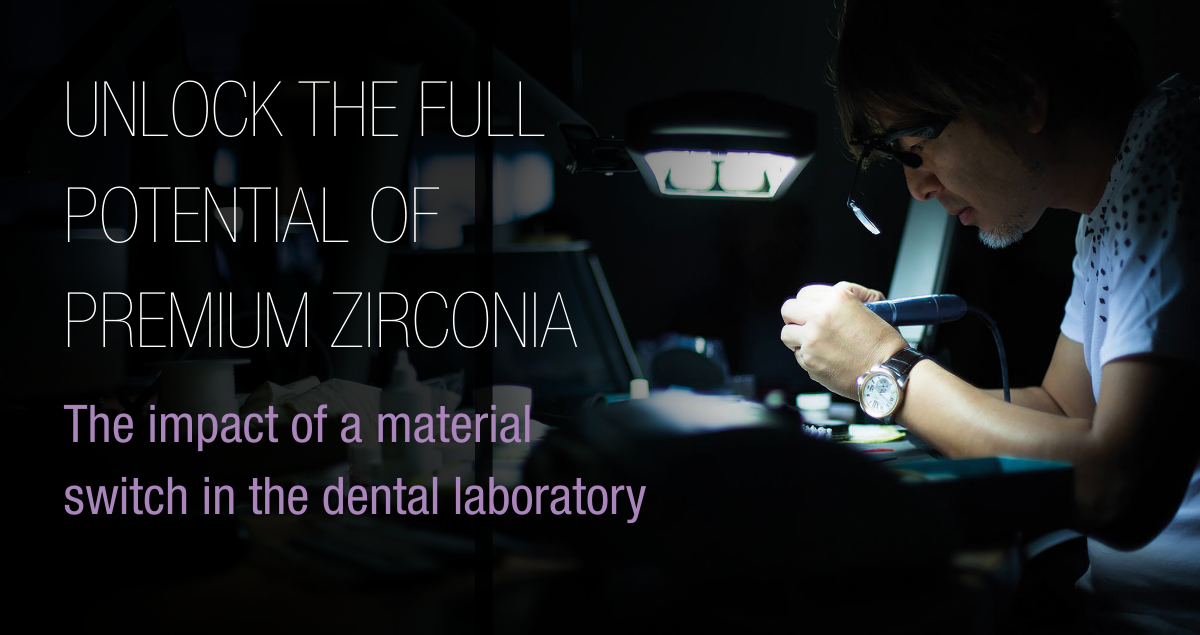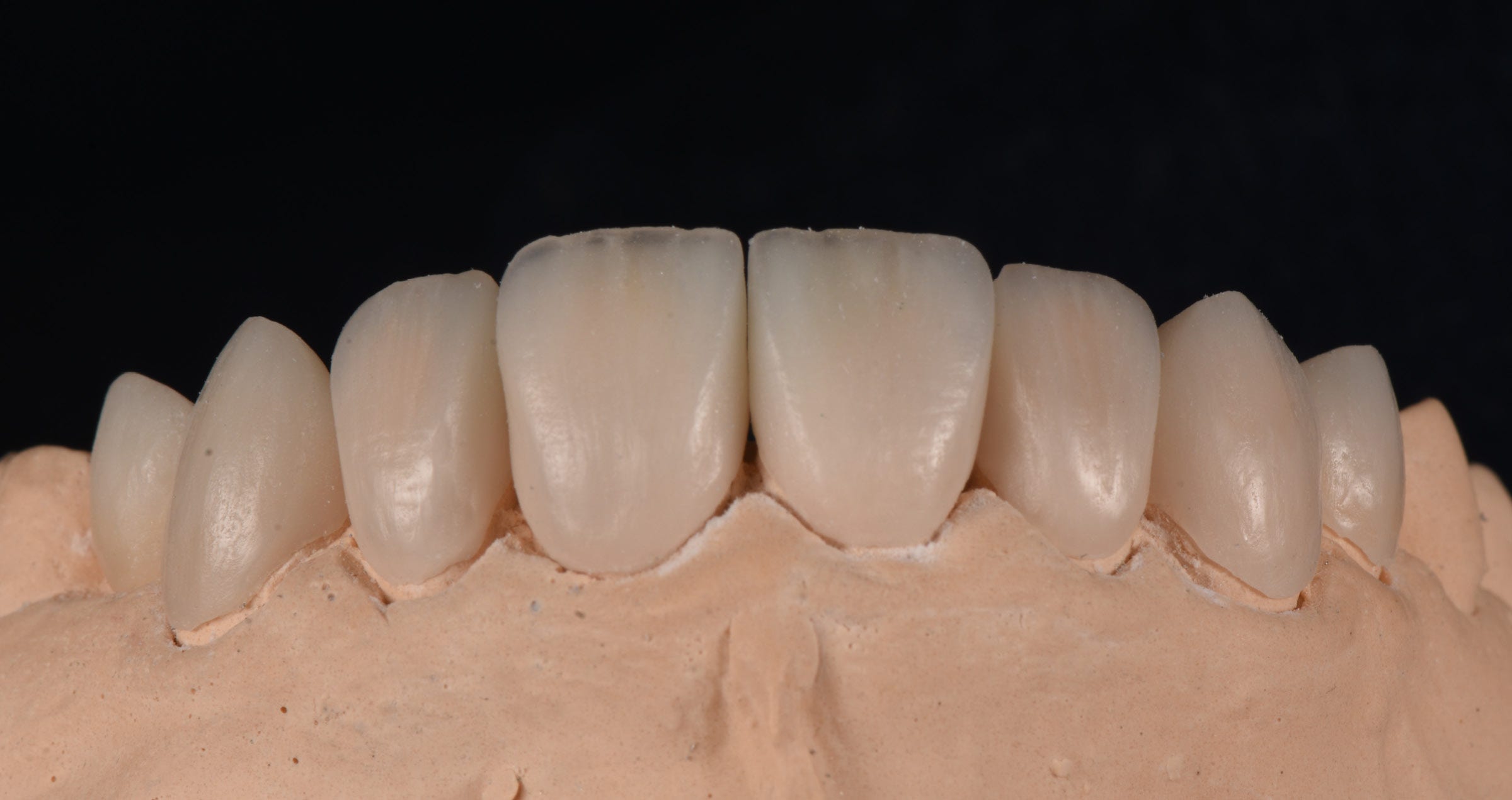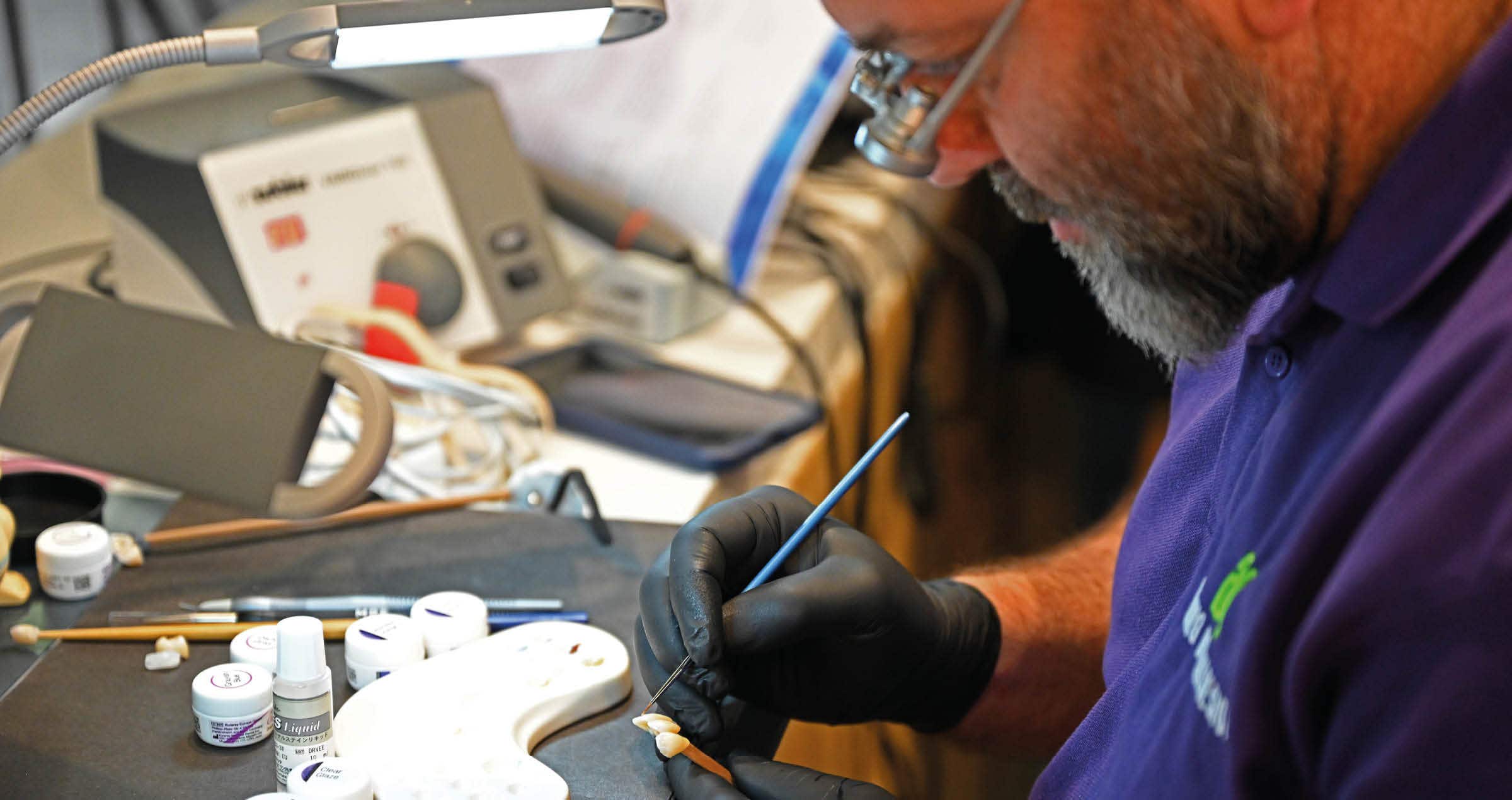
Zero-bake technique: a simplified approach to zirconia aesthetics
Interview with DT Giuliano Moustakis
The percentage of restorations made of zirconia in a full-contour (monolithic) design is steadily increasing. As an enabler of this development, companies like Kuraray Noritake Dental Inc. have introduced high-performance zirconia materials with well-balanced optical and mechanical properties along with innovative finishing solutions. A popular example is KATANA™ Zirconia YML with its multi-layered flexural strength, translucency and colour structure. Combined with Esthetic Colorant for KATANA™ Zirconia and CERABIEN™ ZR FC Paste Stain, it is very well suited for a simplified approach to zirconia aesthetics: The Zero-Bake Technique. We had a conversation with DT Giuliano Moustakis about its benefits and areas of application.
Giuliano Moustakis, why is there a need for a new technique related to the finishing of monolithic zirconia restorations?
Like many manufacturers of restorative materials, I truly believe that the trend towards monolithic zirconia restorations is here to stay. The reason is that there is a huge number of patients who place great value on high-quality dental treatments, but have a limited budget. Many of them are interested in metal-free restorations that blend in nicely with the surrounding dentition and are able to withstand the test of time. Reasonable cost is more important to them than highest-end aesthetics. The new materials available on the market allow us to produce restorations with the desired properties, but we need to think about how to combine them in the most effective way to be able to respond to all those demands including the financial one.
Please describe the Zero-Bake Technique.
This technique is based on a monolithic restoration design carried out in the preferred design software. In this step, it is already important to focus on a natural surface morphology – about 80 percent of the morphology are realized in the digital manufacturing procedure. After milling, some morphological details (the last 20 percent) are added with hand instruments. My personal set of instruments consists of two kinds of diamond discs used for the interproximal area of bridges (with virtually no pressure), a round-end straight carbide bur (fine), Panther stones and a zirconia-blade carving instrument. However, any set of instruments that feels comfortable in the hands of its user may be selected for this task. Taking into account the volumetric shrinkage during sintering and the final polishing and glazing, the structure created is ideally slightly over-contoured and clearly defined. It is definitely worth investing time in this preparatory step, as it will make our lives much easier later in the process. After surface texturing, selected colours of Esthetic Colorant for KATANA™ Zirconia – specific dyeing liquids designed for the imitation of natural optical effects – are applied to the surface.
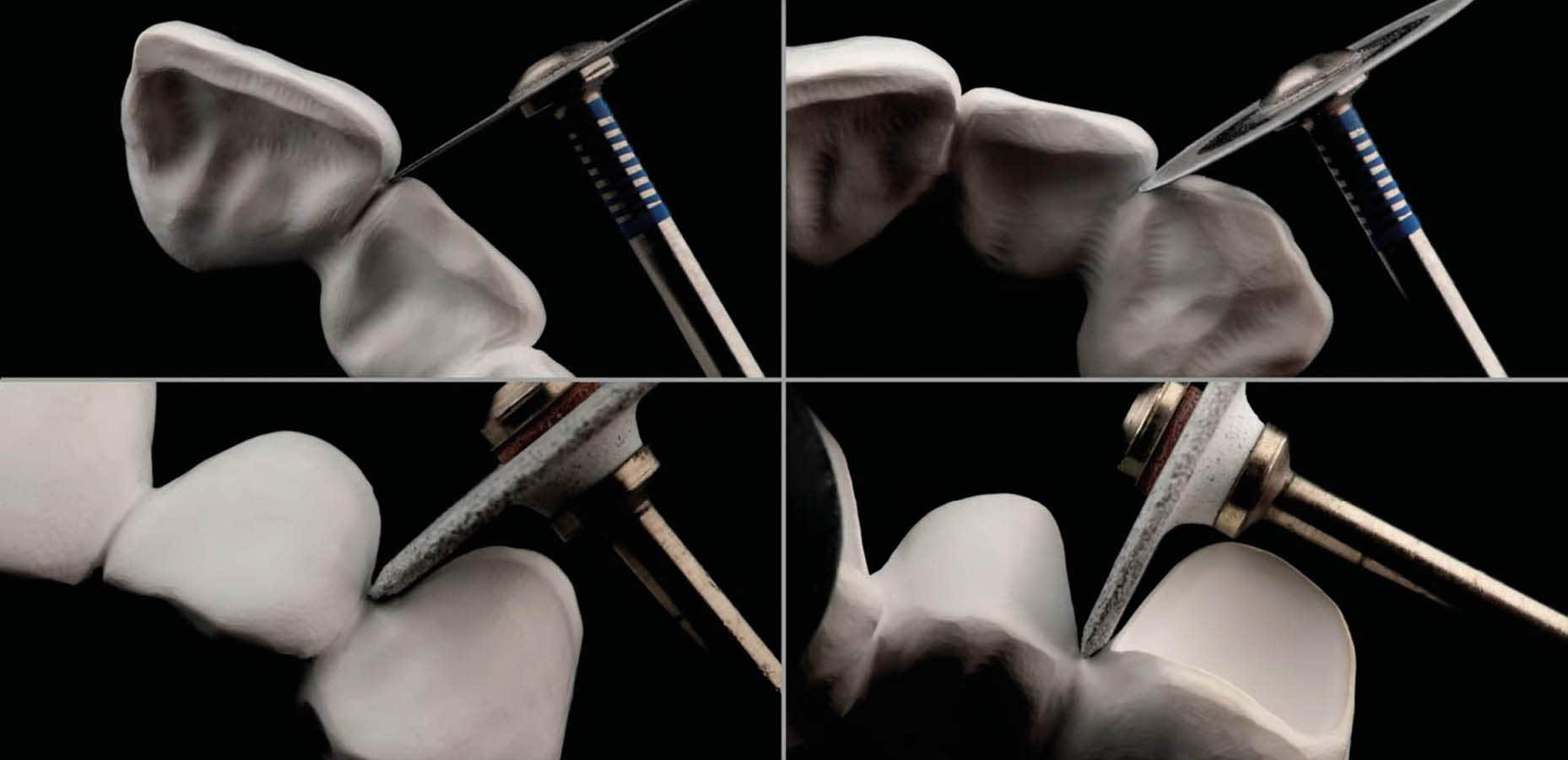
Fig. 1. Working out the details in the interproximal area with rotating disc-shaped instruments.

Fig. 2. Integration of the micro morphology with a round-end straight carbide bur.
Do you have any recommendations on how to proceed with this set of liquids?
Just follow the colour reproduction of the adjacent natural teeth. With Esthetic Colorant, we want to create beautiful illusions, and nature is our best source of inspiration. To be able to copy what we see, however, we need to understand the properties and behaviour of the materials we use. Consequently, I strongly recommend to test them extensively. For example, you may train on remnants of zirconia blanks before moving on to real patient cases. The duration of the testing period should depend on the outcomes produced, which should be highly predictable at the moment the first patient case is started. I experimented and practiced with Esthetic Colorant for about six months, and did use it on the first real case after one moth of practicing.
Nowadays, there are five effect liquids which I use on a daily basis in almost every case:
- A Plus: Used mainly in the vestibular cervical and palatal cervical and mamelon areas to increase the chroma of A dentin shades
- Blue: Used to reproduced the blueish enamel colour found in the area of the incisal edge and occlusal cusps
- Gray: Used (often in addition to Blue) to reproduce the grayish enamel colour found on the incisal edge and cusps
- Orange: Used to give an orange appearance to the cervical area and to intensify the contours of the mamelons
- Brown: Used to reproduce the dentin colour in the cervical area and to darken the colour in the main groove
In addition, there is a liquid with a special function I value highly: Opaque. This modifier liquid is applied on the intaglio of a restoration to mask discoloured or metal abutments. In order to intensify the effects of this and other liquids, they may be applied to a single spot up to three times.
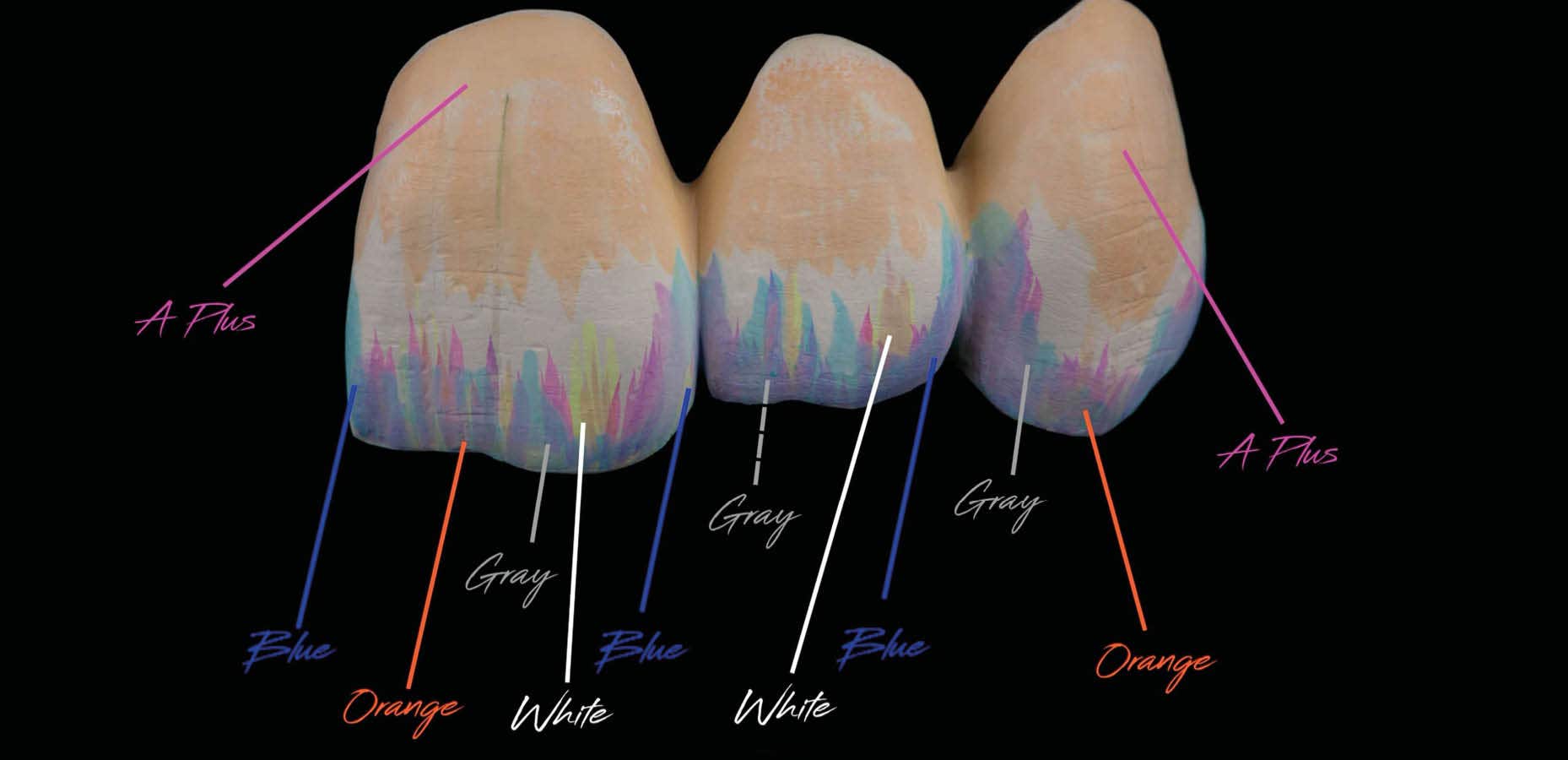
Fig. 3. Basic chromatic map for Individualization in the anterior region.
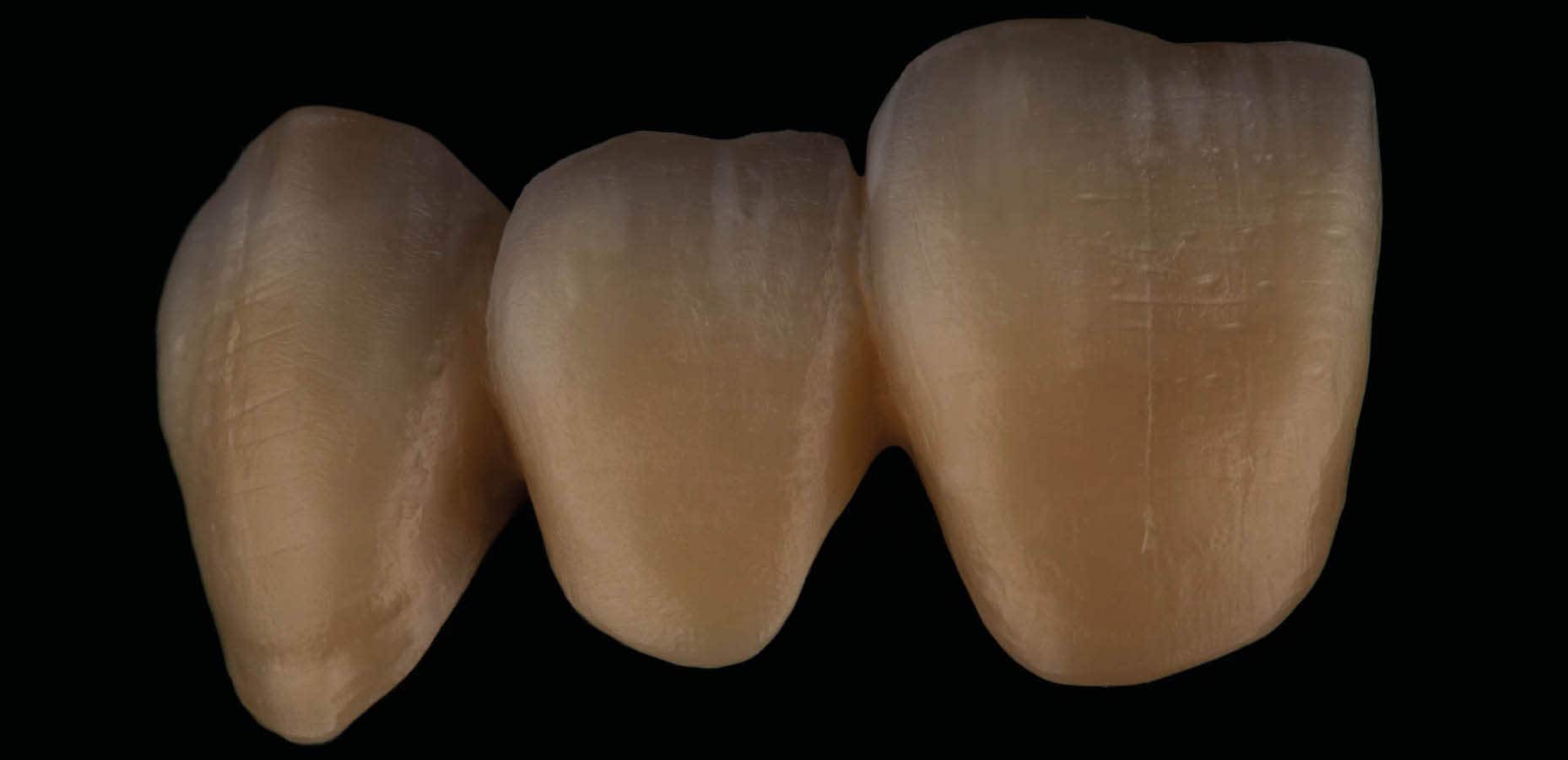
Fig. 4. Restoration after sintering.
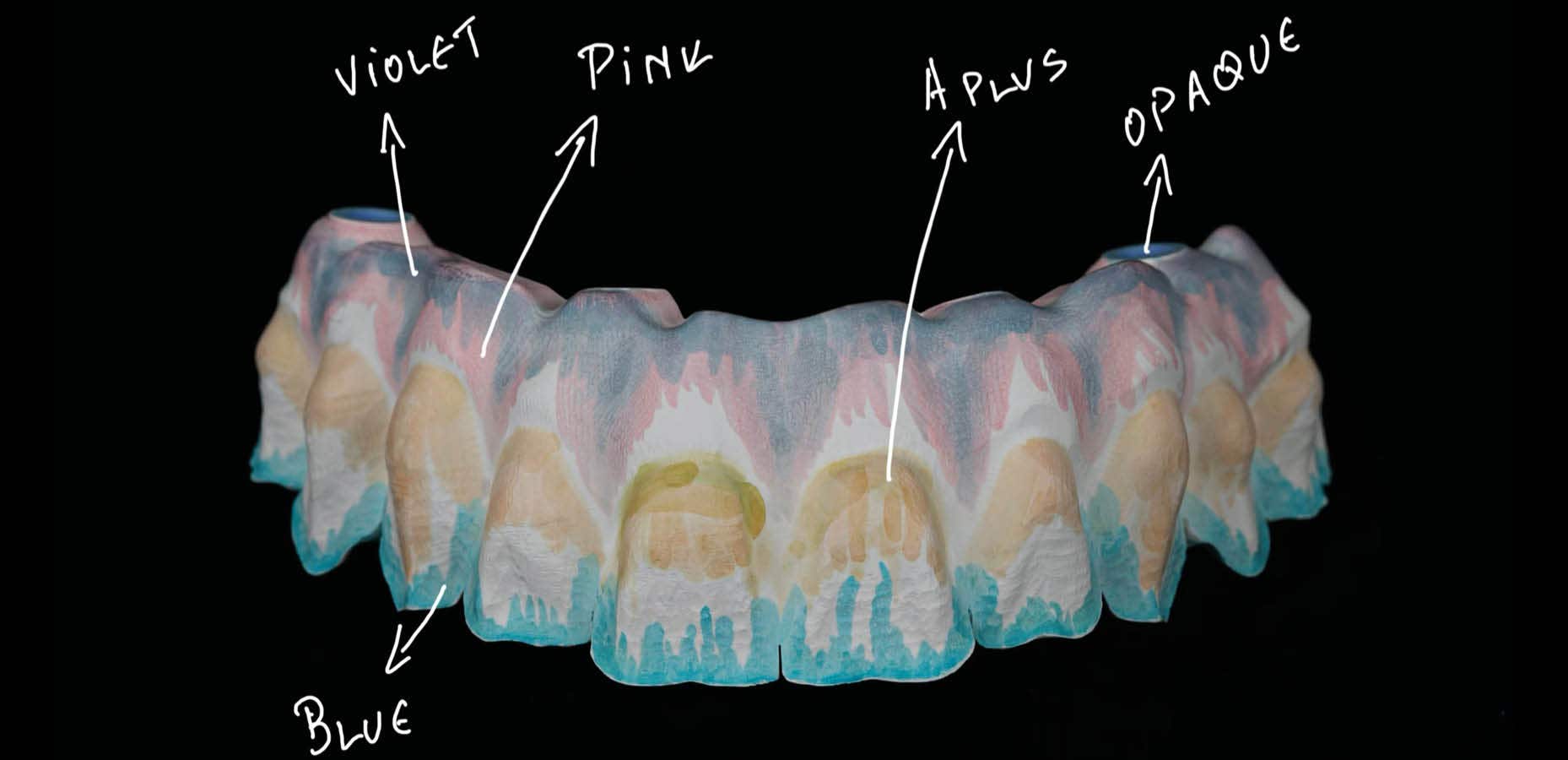
Fig. 5. Frontal view of a complex restoration including gum parts with information on where to apply which type of Esthetic Colorant.
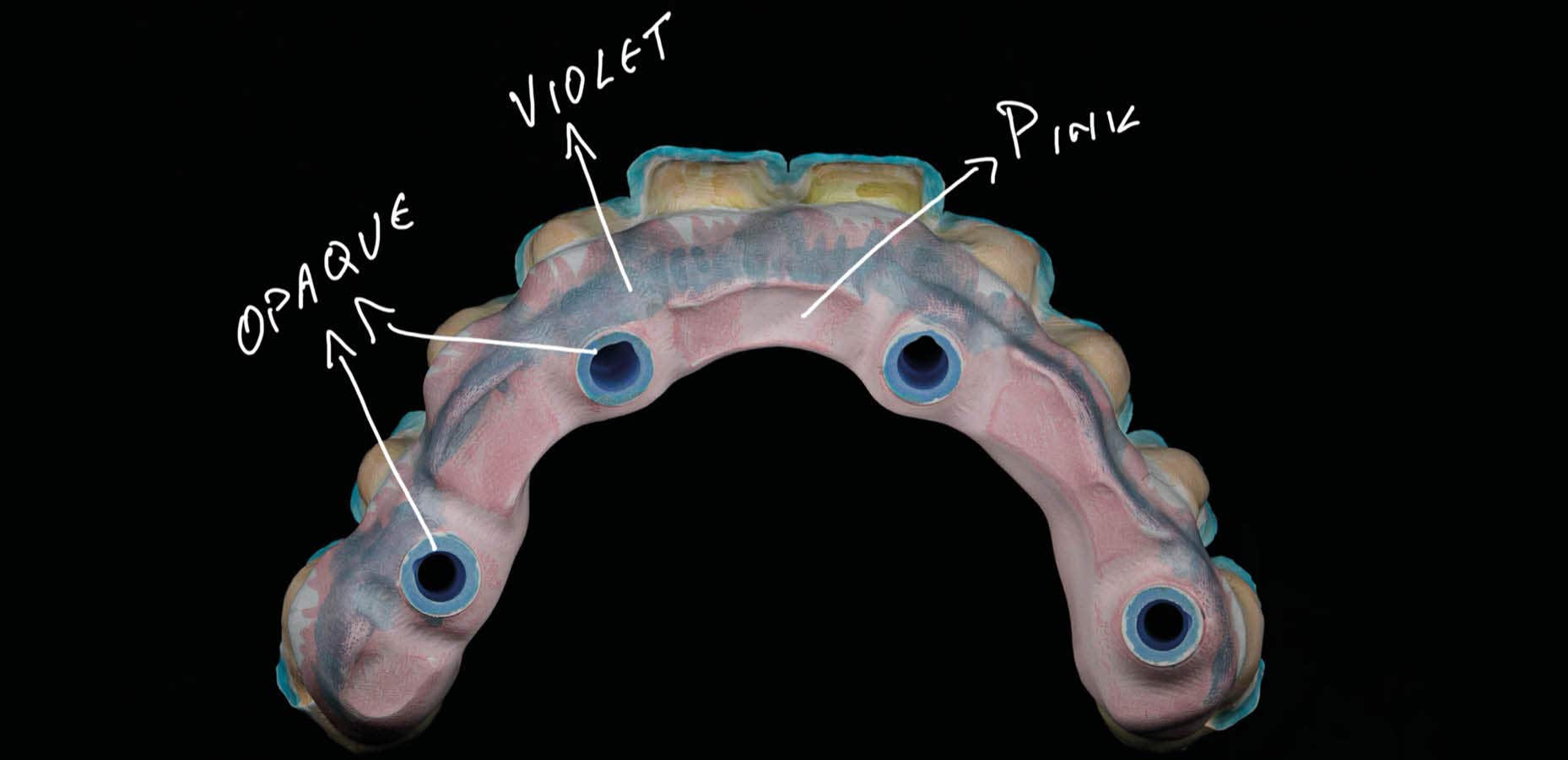
Fig. 6. Basal view of the restoration with Opaque applied to mask the screws, and Violet and Pink to add colour to the gums.
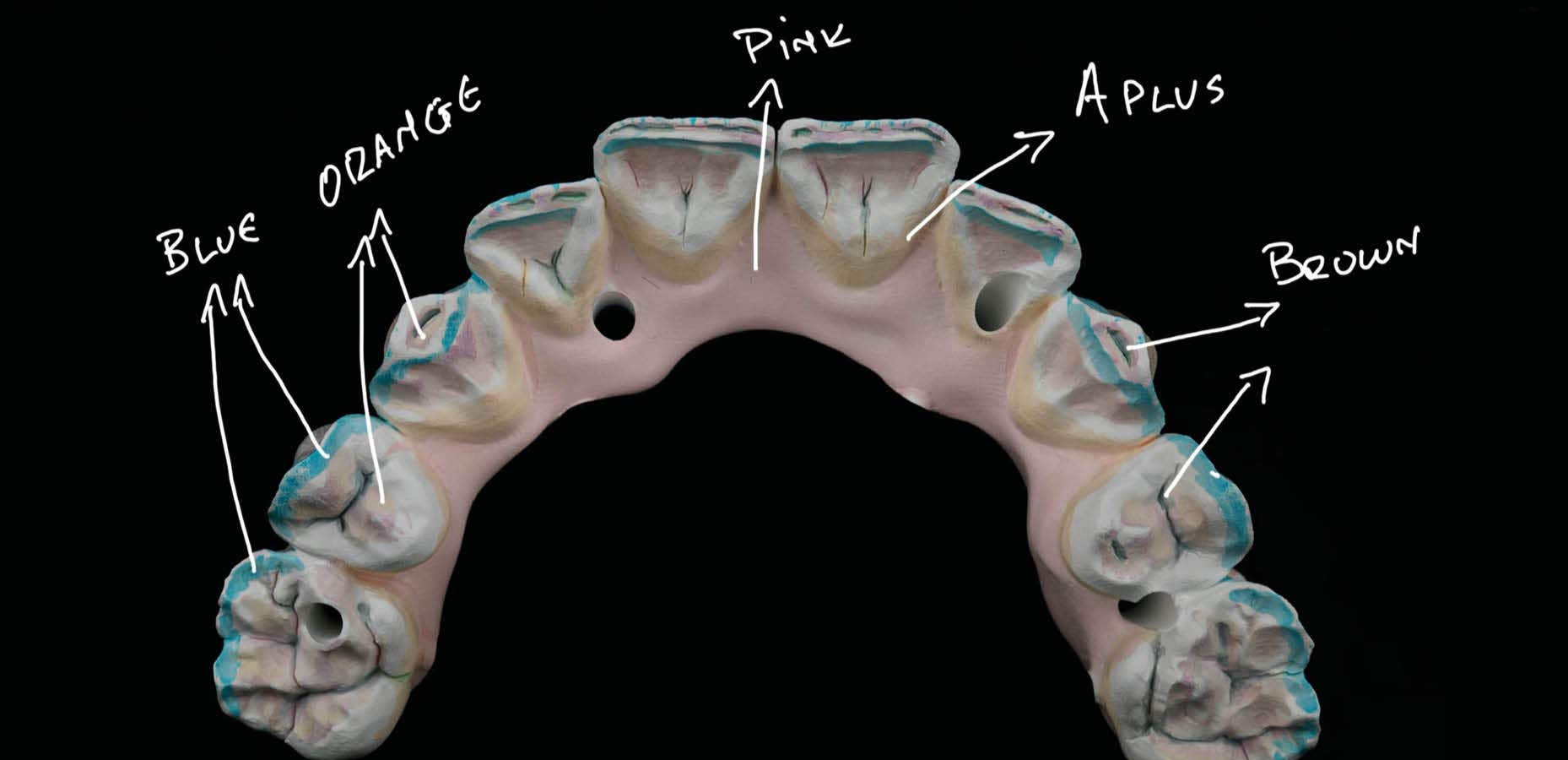
Fig. 7. Occlusal view with colour recommendations.
How do you apply Esthetic Colorant and what are the steps that follow once you have applied them?
For application, I use the dedicated Liquid Brush Pen for Esthetic Colorant. They allow for a controlled application of the desired amount of liquid and thus support predictable outcomes. Once all Esthetic Colorant liquids are applied, it is essential to dry the zirconia at a temperature between 80 and 200° C for a minimum of 30 minutes. During application of the liquids and drying, any contact with metal must be prevented. Therefore, the brushes used during application must be metal-free, and the same holds true for the tray. By adhering to this rule, discolouration is effectively prevented. The subsequently selected sintering protocols are not affected by the effect liquids – and the same for all types of zirconia from the KATANA™ Zirconia Multi-Layered series. Once sintered and cooled down, the surface of the restorations is finished with a set of polishing instruments. My tip in this context is to be careful not to destroy the micro morphology created in the pre-sintering step. To add the final gloss and natural fluorescence, the surface is treated by sandblasting for the application of CERABIEN™ ZR FC Paste Stain, fixed in a single glaze firing procedure.
Does the technique also work without glazing?
Yes, it is definitely possible to do without this step. In this case, however, the restoration will not offer a fluorescent effect. Whenever a restoration is finished without glazing, the surface must be perfectly polished. If completely smooth, the hardness of the material will not cause any harm to the opposing dentition.
What are the main indications for the Zero Bake Technique?
Personally, I use it most often in the context of complex reconstructions and in the posterior region, especially when the available space is limited. It allows for minimal wall thicknesses and the surface is – when well-polished – more antagonist-friendly than a lithium disilicate surface. In other cases, and depending on the financial budget, digitally produced dentin-core crowns are a great option. The dentin core is milled from KATANA™ Zirconia YML, the enamel added using CERABIEN™ ZR Luster Porcelains. Esthetic Colorant, internal stans and CERABIEN™ ZR FC Paste Stain may be added for individual effects. Compared to traditional full porcelain layering, this concept is quicker, involves a lower shrinkage, offers a high stability due to the specific framework design and requires a thinner wall thickness (e.g. 0.6 mm strength of the dentin core plus 0.6 mm porcelain).
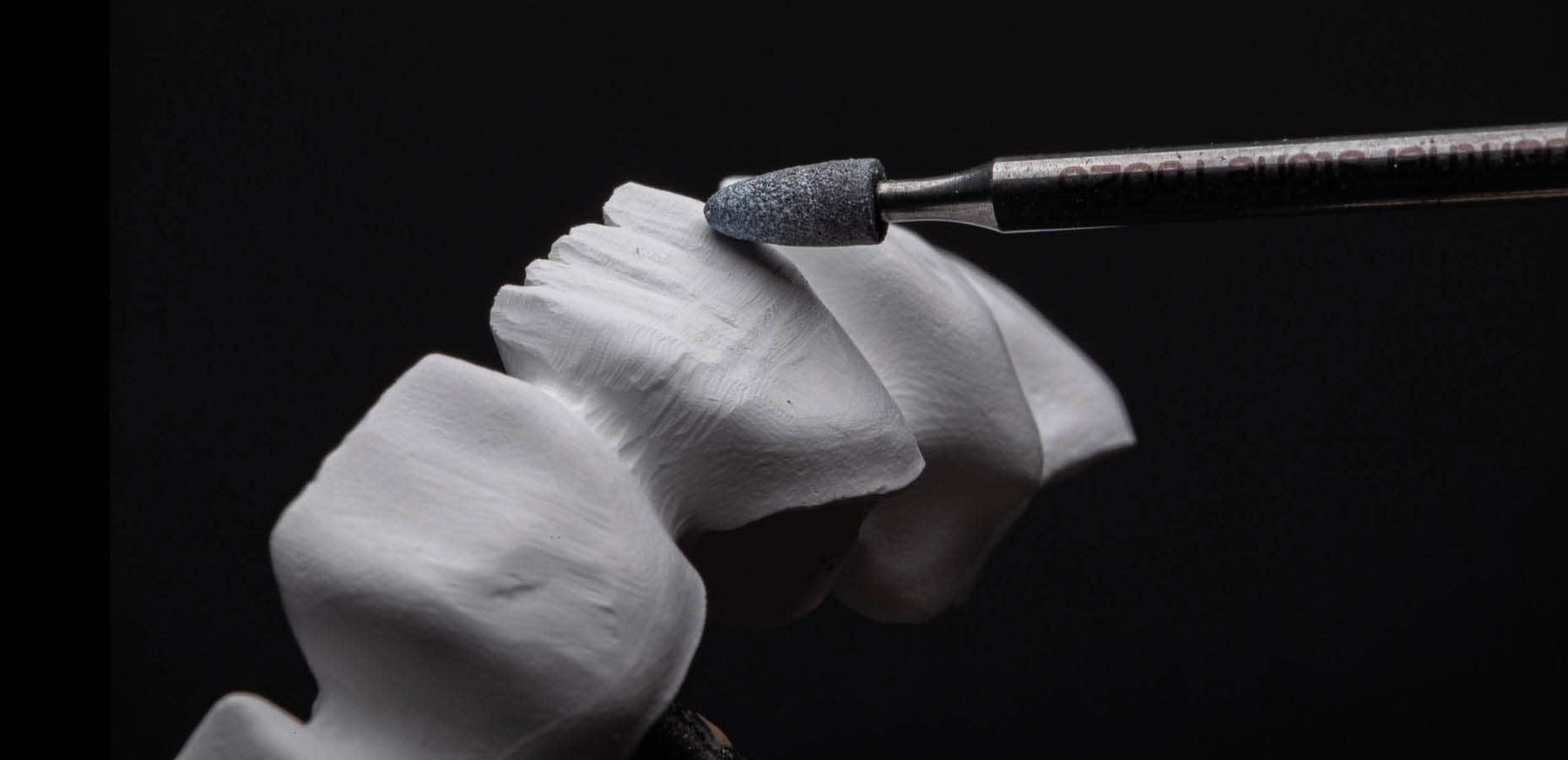
Fig. 8. Example of a dentin-core restoration. The surface morphology is refined with a Panther stone.
Why is it important to develop new design and finishing concepts nowadays?
To my mind, a lack of time is the greatest issue of modern dental technology. Due to a lack of skilled personnel and an expected decrease in the number of dental laboratories in many countries around the globe, we have to keep looking for concepts that help us reduce the time pressure and make our lives easier. While simplifying procedures, however, we need to provide for the same or even a higher quality of the outcomes. This is exactly what I wanted to achieve when starting to develop the Zero-Bake Technique. My personal gain is more free time.
Why do you share your ideas with others by working as an instructor and lecturer?
I simply enjoy interacting with colleagues, equipping them with knowledge and letting them benefit from good ideas.
Dentist:

DT GIULIANO MOUSTAKIS
Giuliano Moustakis has more than 30 years of expertise as dental technician. He was born in Greece but currently resides in Germany, where he has a lab in Falkensee. Giuliano studied at the School of Dental Technology (SBIE) in Athens, Greece. Over the years he completed several other studies in Germany and Japan, including: the maxillofacial prosthetic technician (IASPE), advanced education in functional diagnosis of the temporomandibular joint, Curriculum implant prosthetics for dental technicians (DGZI). He has been a global instructor at Kuraray Noritake Dental Inc. since 2019. Last but not least it is important to note that he is also a gifted and enthusiastic photographer.
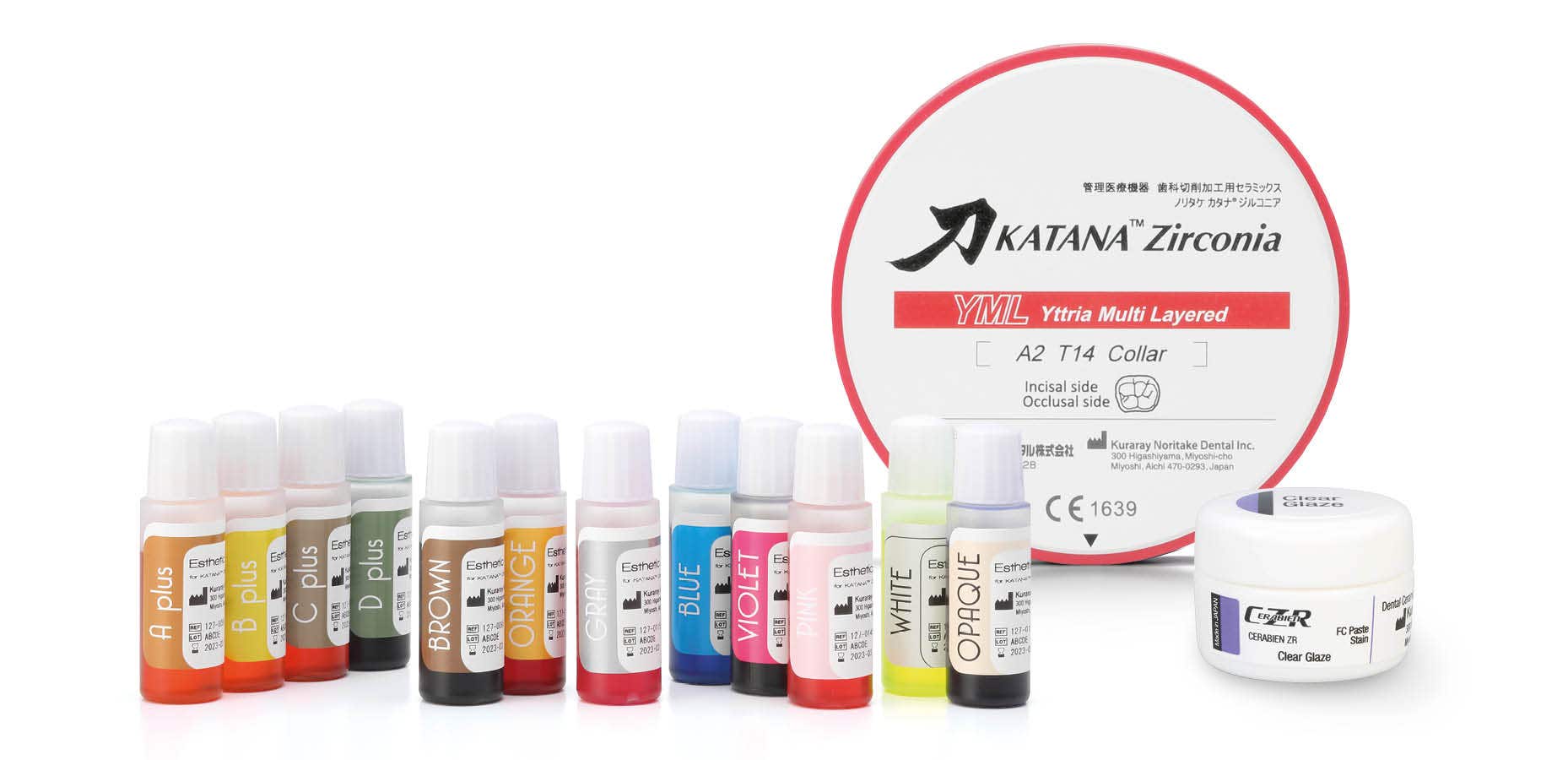
- Sep 26, 2023
